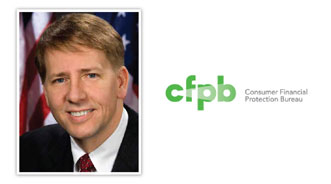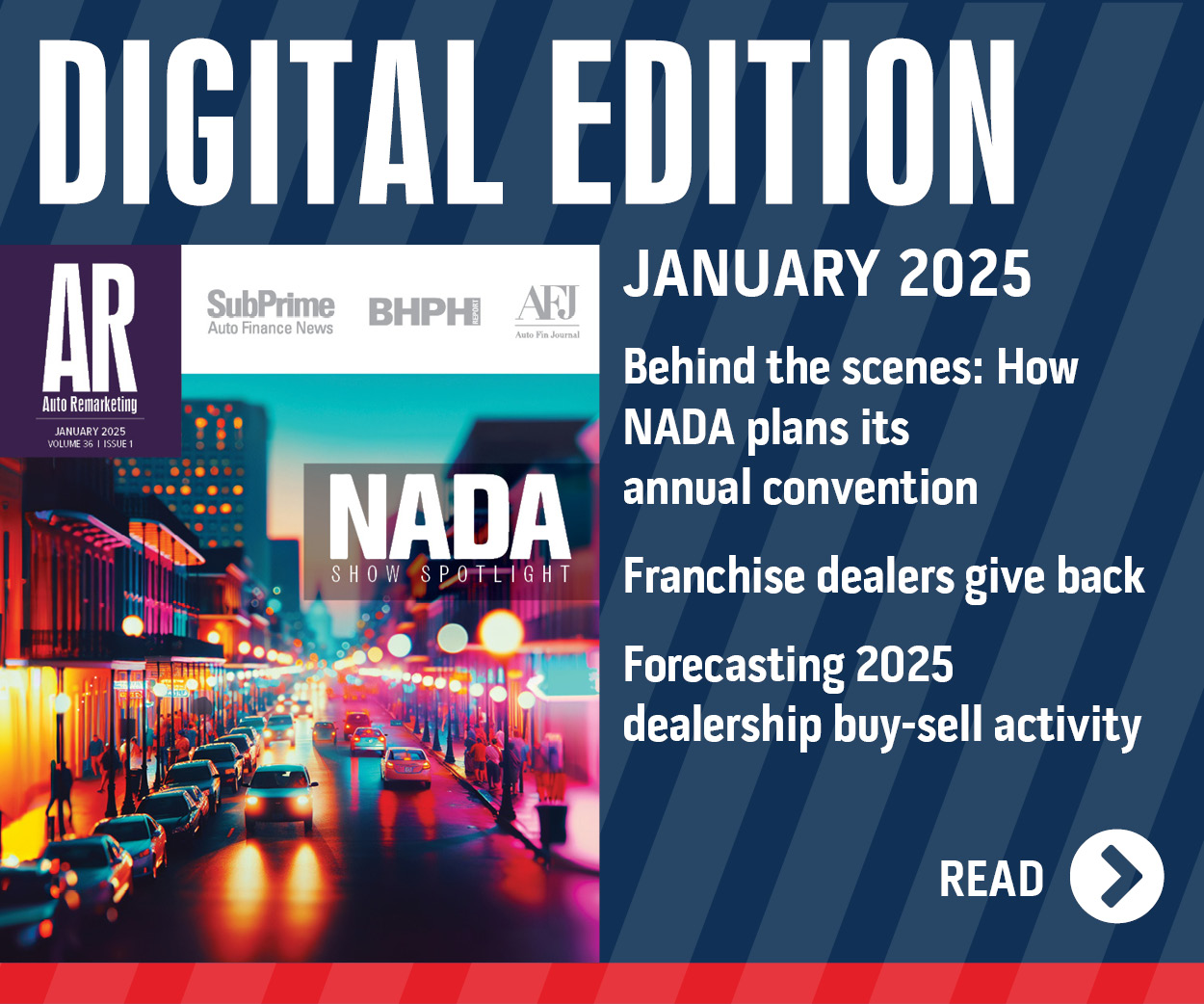CFPB Bulletin Targets Dealer Reserve, Recaps Potential Discriminatory Practices

A bulletin released by the Consumer Financial Protection Bureau on Thursday targeted dealer reserve and potential discriminatory practices as the agency took its first regulatory move aimed solely at the auto finance industry.
The CFPB explained its bulletin was directed at indirect auto lenders that permit dealers to increase consumer interest rates and that compensate stores with a share of the increased interest revenues, better known in the F&I office as dealer reserve or dealer participation.
The agency said it made the notice to provide guidance about compliance with the fair lending requirements of the Equal Credit Opportunity Act (ECOA) and its implementing regulation, Regulation B.
CFPB director Richard Cordray said on Thursday that lenders that offer auto loans through dealerships are responsible for unlawful, discriminatory pricing, and the bulletin was intended to provide guidance to indirect auto lenders within the CFPB’s jurisdiction on how to address fair lending risk
Cordray noted the guidance applies to all indirect auto lenders within the jurisdiction of the CFPB, including both depository institutions and nonbank institutions.
The head of the CFPB believes potentially discriminatory markups in auto lending may result in tens of millions of dollars in consumer harm each year.
“Consumers should not have to pay more for a car loan simply based on their race,” Cordray said. “Today’s bulletin clarifies our authority to pursue auto lenders whose policies harm consumers through unlawful discrimination.”
To arrive at their assertions, CFPB officials explained how they crafted the bulletin by recapping what they believe happens in the F&I office.
The agency said it understands that in indirect auto financing, the dealer usually collects basic information regarding the applicant and uses an automated system to forward that information to several prospective indirect auto lenders.
After evaluating the applicant, the CFPB stated the indirect auto lenders may choose not to become involved in the transaction or they may choose to provide the dealer with a risk-based “buy rate” that establishes a minimum interest rate at which the lender is willing to purchase the retail installment sales contract executed by the consumer for the purchase of the vehicle.
“In some circumstances, the indirect auto lender may exercise discretion in adjusting the buy rate, making underwriting exceptions, or modifying other terms and conditions of the financing as a result of additional negotiation between the indirect auto lender and the dealer,” agency officials said.
The CFPB noted the indirect lender may also have a policy that allows the dealer to mark up the interest rate above the indirect auto lender’s buy rate, typically referred to as “reserve” or “participation.”
Agency officials said, “The supervisory experience of the CFPB confirms that some indirect auto lenders have policies that allow auto dealers to mark up lender-established buy rates and that compensate dealers for those markups in the form of reserve (collectively markup and compensation policies).
“Because of the incentives these policies create, and the discretion they permit, there is a significant risk that they will result in pricing disparities on the basis of race, national origin, and potentially other prohibited bases,” they went on to say.
Indirect Auto Lenders as Creditors Under the ECOA
The CFPB pointed out the ECOA makes it illegal for a “creditor” to discriminate in any aspect of a credit transaction because of race, color, religion, national origin, sex, marital status, age, receipt of income from any public assistance program, or the exercise, in good faith, of a right under the Consumer Credit Protection Act.
The ECOA defines a “creditor” to include not only “any person who regularly extends, renews, or continues credit,” but also “any assignee of an original creditor who participates in the decision to extend, renew, or continue credit.”
Regulation B further provides that “creditor” means “a person, who, in the ordinary course of business, regularly participates in the decision of whether or not to extend credit” and expressly includes an “assignee, transferee, or subrogee who so participates.”
“The commentary to Regulation B makes clear that an assignee is considered a ‘creditor’ when the assignee participates in the credit decision,” CFPB officials said. “The commentary provides that a ‘creditor includes all persons participating in the credit decision’ and that ‘this may include an assignee or a potential purchaser of the obligation who influences the credit decision by indicating whether or not it will purchase the obligation if the transaction is consummated.”
Even as assignees of the installment contract, the CFPB insisted indirect auto lenders are creditors under the ECOA and Regulation B if, in the ordinary course of business, they regularly participate in a credit decision.
“The CFPB recognizes that there is a continuum of indirect lender participation in credit decisions, ranging from no participation to being the sole decision maker with respect to a particular transaction, and that a lender’s practices and conduct may place it at various points along this continuum,” officials said.
“The CFPB also recognizes that credit transactions in indirect auto lending take many forms. However, information gathered by the CFPB suggests that the standard practices of indirect auto lenders likely constitute participation in a credit decision under the ECOA and Regulation B,” they continued.
For example, the CFPB explained that an indirect auto lender is likely a creditor under the ECOA when it evaluates an applicant’s information, establishes a buy rate, and then communicates that buy rate to the dealer, indicating that it will purchase the obligation at the designated buy rate if the transaction is consummated.
In addition, the agency said that when a lender provides rate sheets to a dealer establishing buy rates and allows the dealer to mark up those buy rates, the lender may be a creditor under the ECOA when it later purchases a contract from such a dealer.
“These two examples are illustrative of common industry practices; indirect auto lenders may also be creditors under other circumstances,” officials said.
Liability of Indirect Auto Lenders for Discrimination Resulting from Markup & Compensation Policies
The CFPB went on to highlight that an additional consideration for auto lenders covered as creditors under the ECOA is whether and under what circumstances they are liable for pricing disparities on a prohibited basis.
“When such disparities exist within an indirect lender’s portfolio, lenders may be liable under the legal doctrines of both disparate treatment and disparate impact,” officials said.
“An indirect auto lender’s markup and compensation policies may alone be sufficient to trigger liability under the ECOA if the lender regularly participates in a credit decision and its policies result in discrimination,” they continued. “The disparities triggering liability could arise either within a particular dealer’s transactions or across different dealers within the lender’s portfolio.
“Thus, an indirect auto lender that permits dealer markup and compensates dealers on that basis may be liable for these policies and practices if they result in disparities on a prohibited basis,” they went on to say.
The CFPB believes some indirect auto lenders may be operating under the incorrect assumption that they are not liable under the ECOA for pricing disparities caused by markup and compensation policies because Regulation B provides that “a person is not a creditor regarding any violation of the (ECOA) or (Regulation B) committed by another creditor unless the person knew or had reasonable notice of the act, policy, or practice that constituted the violation before becoming involved in the credit transaction.”
“This provision limits a creditor’s liability for another creditor’s ECOA violations under certain circumstances,” the CFPB said. “But it does not limit a creditor’s liability for its own violations — including, for example, disparities on a prohibited basis that result from the creditor’s own markup and compensation policies.
“Additionally, an indirect auto lender further may have known or had reasonable notice of a dealer’s discriminatory conduct, depending on the facts and circumstances,” the agency added.
Limiting Fair Lending Risk in Indirect Auto Lending
Officials recommended that institutions subject to CFPB jurisdiction, including indirect auto lenders, should take steps to ensure that they are operating in compliance with the ECOA and Regulation B as applied to dealer markup and compensation policies.
The agency indicated these steps may include, but are not limited to:
—Imposing controls on dealer markup and compensation policies, or otherwise revising dealer markup and compensation policies, and also monitoring and addressing the effects of those policies in the manner described below, so as to address unexplained pricing disparities on prohibited bases.
—Eliminating dealer discretion to mark up buy rates and fairly compensating dealers using another mechanism, such as a flat fee per transaction, that does not result in discrimination.
Officials mentioned another tool for limiting fair lending risk in indirect auto lending — developing a robust fair lending compliance management program.
The CFPB said it recognizes that the appropriate program will vary among financial institutions.
In its most recent Supervisory Highlights, the CFPB set out the following features of a strong fair lending compliance program, which the agency said are applicable in the indirect auto lending context:
—An up-to-date fair lending policy statement.
—Regular fair lending training for all employees involved with any aspect of the institution’s credit transactions, as well as all officers and board members.
—Ongoing monitoring for compliance with fair lending policies and procedures.
—Ongoing monitoring for compliance with other policies and procedures that are intended to reduce fair lending risk (such as controls on dealer discretion).
—Review of lending policies for potential fair lending violations, including potential disparate impact.
—Depending on the size and complexity of the financial institution, regular analysis of loan data in all product areas for potential disparities on a prohibited basis in pricing, underwriting, or other aspects of the credit transaction.
—Regular assessment of the marketing of loan products.
—Meaningful oversight of fair lending compliance by management and, where appropriate, the financial institution’s board of directors.
For some lenders, the CFPB noted that additional compliance-management components may be necessary to address significant fair lending risks.
“For example, indirect auto lenders that retain dealer markup and compensation policies may wish to address the fair lending risks of such policies by implementing systems for monitoring and corrective action,” officials said.
The CFPB explained that lenders could achieve this level by implementing four procedures:
—Sending communications to all participating dealers explaining the ECOA, stating the lender’s expectations with respect to ECOA compliance, and articulating the dealer’s obligation to mark up interest rates in a non-discriminatory manner in instances where such markups are permitted.
—Conducting regular analyses of both dealer-specific and portfolio-wide loan pricing data for potential disparities on a prohibited basis resulting from dealer markup and compensation policies.
—Commencing prompt corrective action against dealers, including restricting or eliminating their use of dealer markup and compensation policies or excluding dealers from future transactions, when analysis identifies unexplained disparities on a prohibited basis.
—Promptly remunerating affected consumers when unexplained disparities on a prohibited basis are identified either within an individual dealer’s transactions or across the indirect lender’s portfolio.
“The CFPB will continue to closely review the operations of both depository and non-depository indirect auto lenders, utilizing all appropriate regulatory tools to assess whether supervisory, enforcement, or other actions may be necessary to ensure that the market for auto lending provides fair, equitable, and nondiscriminatory access to credit for consumers,” officials said.
Editor’s Note: Reaction to the CFPB’s bulletin is set to be included in Friday’s edition of SubPrime News Update. If you don’t already have a subscription to the three-times-a-week product of sister publication SubPrime Auto Finance News, go here.
Continue the conversation with Auto Remarketing on both LinkedIn and Twitter.

 View The Latest Edition
View The Latest Edition

